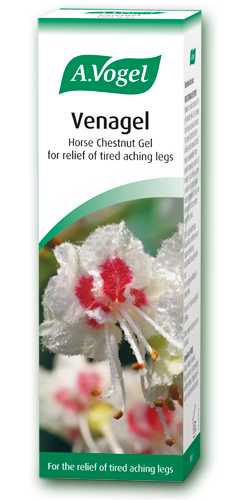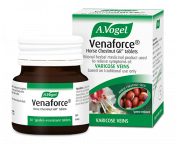1) Loss of muscle mass
When we lose muscle mass from inactivity, gaps in the muscle can open up and veins can dilate leading to the appearance of varicose veins. The valves in veins help blood to get back to the heart, and the biggest way to help the valves to do this is through the muscles in our legs which push the blood upwards. If you are inactive for long periods of time the veins have no muscular help which, in turn, can result in the blood pooling.
Top tip: Try to keep moving as much as possible to avoid blood pooling, taking regular exercise to build up your muscles and to keep the blood pumping around your body.

2) Your job
Scratch that, rather what your job entails – both sitting all day and standing all day can contribute to varicose veins. Standing all day can put more pressure on weak vein valves, whilst sitting for long periods of time can slow the circulation and cause blood to pool in our legs because our muscles aren’t contracting to pump blood back around the body.
To minimise your chances of developing varicose veins try alternating between sitting and standing. If you tend to sit down for most of the day, try to move around every 30 minutes or so to engage your muscles and get your blood flowing.
Top tip: A great way to do this is to use a desk which can be converted into a standing desk to give you the option of standing for short periods of time. Alternatively, if your job entails a lot of standing, try to walk around to keep your legs moving if you can, rather than standing still in one spot.
My Top Tip: Venaforce tablets are made from freshly harvested horse chestnut seeds, which are used to improve blood flow and relieve the swelling and discomfort caused by varicose veins. Take one tablet, twice daily. Venaforce tablets are made from freshly harvested horse chestnut seeds, which are used to improve blood flow and relieve the swelling and discomfort caused by varicose veins. Take one tablet, twice daily.
|
3) How you sit
Although sitting with your legs cross isn’t a direct cause of varicose veins, it can potentially exacerbate existing symptoms and make your varicose veins appear worse. When you sit in this position, you put pressure on your legs and hips so that the veins swell up with blood and become much more visible. To avoid putting extra pressure on your varicose veins and causing yourself more discomfort, don’t sit with your legs crossed for long periods of time.

4) Caffeine
Varicose veins are caused by high blood pressure within a vein; drinking too much caffeine can increase your blood pressure and the likelihood that you’ll get varicose veins. When you drink caffeine, your blood vessels constrict, which makes it more difficult for blood to move freely through your circulatory system. Over time, this could result in the development of varicose veins.
I wouldn’t say to give up caffeine altogether, but try to keep healthy moderation in mind. 400mg of caffeine per day (roughly 4 cups of coffee) is considered safe if you’re a healthy adult, while the NHS recommends that pregnant women have no more than 200mg of caffeine per day.
Top tip: If you’re prone to drinking more than the daily recommended amount of coffee, I would suggest switching to a caffeine-free coffee alternative like Bambu.
5) Lack of exfoliation
If you already have poor circulation and skip out on exfoliating or moisturising, you can become more prone to varicose veins. Exfoliating can act as a massage of sorts and can help to improve blood circulation to the legs which can then help to prevent varicose veins. Dry brushing is generally more effective than wet exfoliation because water encourages the skin to plump up, making it harder to remove dead skin cells. Check out my blog on the benefits of dry skin brushing for your circulation for more information.

More common causes of varicose veins:
Age
As we get older the likelihood of experiencing varicose veins increases because veins can lose elasticity and stretch. Vein valves are also more likely to become weak and can allow blood that should be moving towards the heart to flow in the opposite direction.
Pregnancy
Even though pregnant women have an increased volume of blood during their pregnancy, the added pressure on the abdomen can contribute to varicose veins. Pregnancy also decreases the flow of blood from your legs to your pelvis to support the baby, increasing the likelihood of the appearance of varicose veins.
Weight
If you are overweight you put your body under added strain to carry out its normal functions. Your heart will have to pump extra hard in order to get blood circulated throughout the body. Being overweight also puts excess pressure on the veins of the legs which can then contribute to the formation of varicose veins or aggravate existing symptoms.

What can you do for varicose veins?
There are a number of ways you can prevent and ease symptoms of varicose veins, including home remedies, herbal remedies and conventional methods.
Home remedies
• Elevate your legs – this lets gravity do the work and helps get blood from your legs back around the rest of your body.
• Wear loose clothing – tight clothes can restrict and interrupt the normal flow of blood from the legs back to the heart.
• Avoid hot baths – heat dilates (widens) your veins and slows down the circulation in your legs.
• Improve your diet – this can help you maintain a healthy weight and reduce pressure on your veins. It can also help you to avoid constipation, which is another condition that can worsen varicose veins.
Herbal remedies
• Horse chestnut seed – traditionally horse chestnut seeds (more commonly known as the conker) have been used to help treatment of varicose veins. They can come in tablet form such as our Venaforce or as a gel like our Venagel.
Conventional methods
• Compression stockings – compression stockings work by putting pressure on the varicose vein, squeezing the tissue around the vein to help blood flow up the leg.
• Surgery – surgical treatment involves the physical removal of the vein and is carried out under general anaesthetic. A variety of techniques can be used depending on the severity of the condition.
• Laser treatment – this involves heating the varicose vein, causing inflammation to scar and seal up the vein.
Originally written on 20/11/2017, updated on 20/11/2018.









